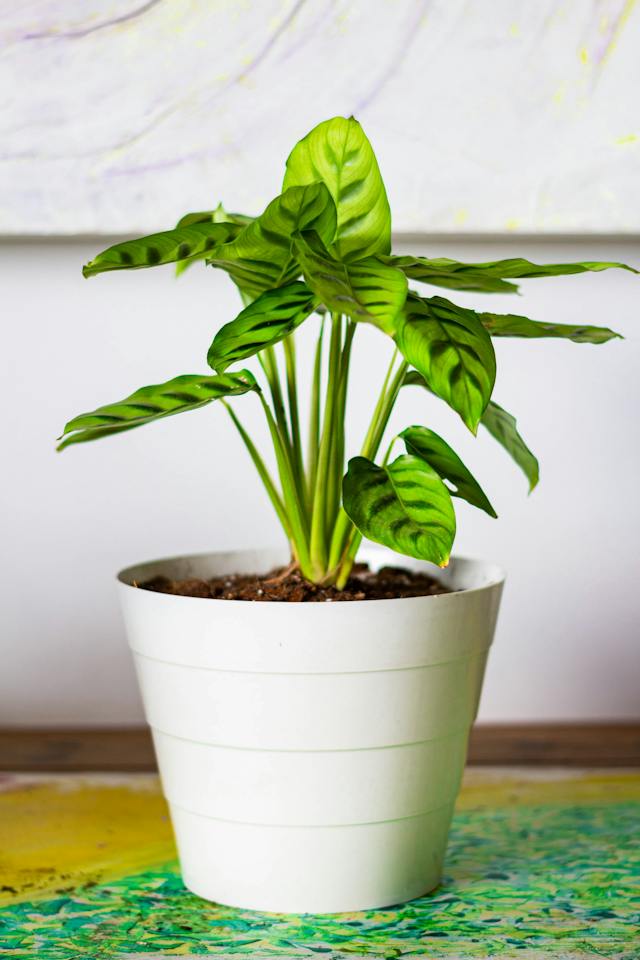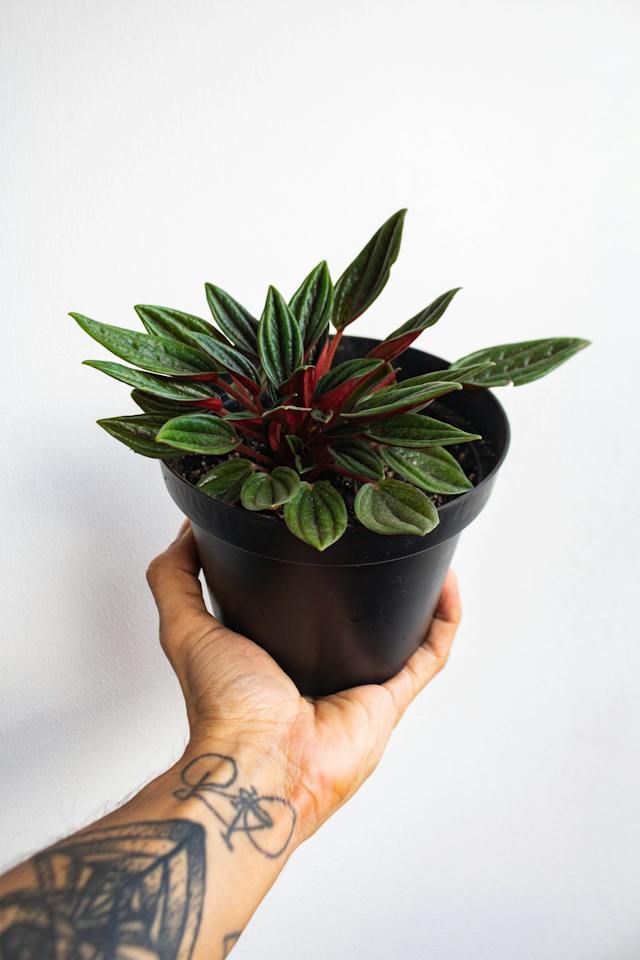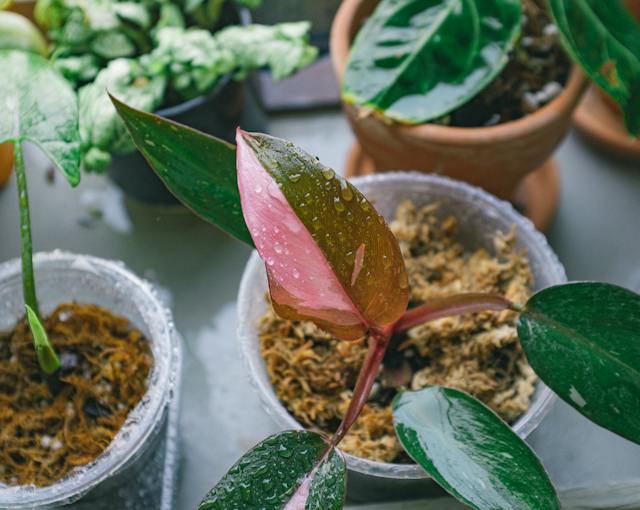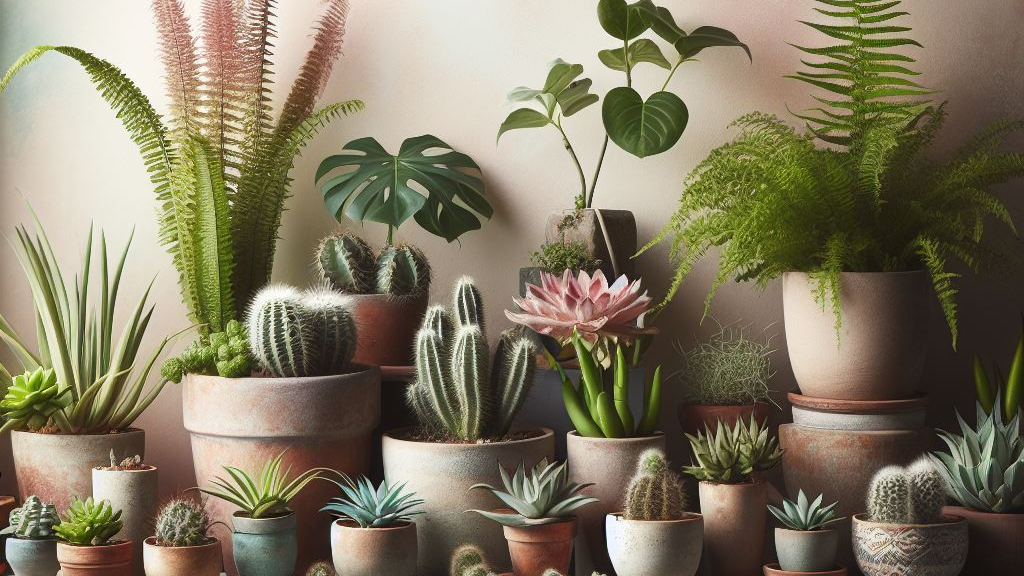Last updated on April 19th, 2024 at 08:58 am
Indoor gardening is a beneficial hobby that not only keeps your house airy but also enhances its beauty. Many types of indoor plants, especially tiny plants, are well-suited for small spaces, making them easy to cultivate and maintain. These petite wonders not only add a touch of greenery to your home but also contribute to a healthier indoor environment.
Their compact size allows you to arrange them creatively in limited spaces, bringing a sense of freshness and tranquility to your living spaces. Embracing tiny plants as part of your indoor gardening endeavors is a delightful way to effortlessly incorporate nature into your home, creating a harmonious and visually pleasing atmosphere.
Contents
10 Tiny plants that are best for a small space living.
ALOCASIA
Size:
This tiny plant boasts a compact size, ranging from just 12 to 36 inches, though its dimensions may vary depending on the specific variety.
Water:
Regular watering is essential for this tiny plant during the growth season, as moist soil promotes its development without becoming soggy. However, it doesn’t require frequent watering during the winter.
Fertilizer:
During the summer and spring, nourish this tiny plant with a diluted liquid fertilizer once or twice a month.
Alocasias can sometimes grow as tall as 6 feet, but there are miniature varieties known as “jewel alocasias” that are perfect for tabletops or hanging on a wall using a plant hanger. These tiny plants thrive in greenhouse-like conditions, requiring a temperature below 60°F. They are not fond of excessive cold drafts.
BLUE STAR FERN
Size:
These tiny plants exhibit a modest size, ranging from a minimum of 10 to a maximum of 14 inches.
Water:
The leaf edges of these tiny plants may start burning quickly if the soil dries completely. It is crucial to water them regularly, observing the soil for signs of moisture loss.
Fertilize:
Actively feed these tiny plants at least once a month during their growth phase.
Not all ferns have identical leaves; they may vary from lacy to dark green. As they mature, the leaves may develop turns on the edges or curls, giving them a lobed-friendly appearance. The variety in leaves adds to their handsome aesthetic.
Like other ferns, these ferns thrive in bright light, indirectly nourishing them. Optimal locations for these tiny plants in your house include areas with higher moisture levels, such as the kitchen or bathroom, providing the extra moisture and indirect light they require.
CALATHEA

Size:
The height of these tiny plants is a mere 12 to 30 inches, making them perfect for compact spaces.
Water:
To maintain the beauty of these tiny plants, ensure regular watering. The leaves may start burning if the soil feels dry, so keep it consistently moist. Use purified water for their feeding, as they are sensitive to impurities and require extra care.
Fertilize:
Feed calathea with half-strength fertilizer according to their growth requirements.
The foliage of these plants is exceptionally decorative, making them ideal for cultivation in small spaces. With varied leaf shapes, patterns, and a range of colors, Calathea presents a delightful variety.
These tiny plants prefer low-light environments, thriving in less bright areas. Exposure to bright sunlight can damage their delicate leaves.
These tiny plants, like the Calathea, into your indoor space not only add aesthetic appeal but also fit well in smaller settings, making them an excellent choice for enthusiasts of tiny plants.
NEVER NEVER PLANT
Size:
Never Never Plant has a height ranging from a minimum of 12 to a maximum of 36 inches, making them suitable for small spaces.
Water:
Thriving in moist soil without becoming soggy, these tiny plants prefer filtered water to avoid salt and impurities. Refrain from using tap water for their feeding to ensure their well-being.
Fertilize:
These tiny plants flourish with diluted fertilizer applied once a month, and it’s crucial not to use full-strength fertilizer. Avoid fertilizing during the cold season.
Known as the “prayer plant,” these plants exhibit a unique behavior of laying their leaves straight during the day and folding them upward as night falls. The leaves feature a striking mix of silver and grey, creating a beautiful and pleasing visual experience. Given their sensitivity, these tiny plants cannot tolerate bright sunlight; hence, it’s essential to keep them in a dim or low-light area of your house. This ensures their well-being and helps maintain the moisture level according to their feeding needs.
POTHOS
Size:
The length of the Pothos vines ranges from 6 to 10 feet, making them suitable for small spaces.
Water:
During the watering process, ensure the upper soil remains dry by at least one inch.
Fertilize:
Feed pothos with diluted fertilizer once to three months.
This is a tiny plant that thrives in small spaces within your house. Its vines can be easily trimmed, allowing you to keep it compact. For decorative purposes, this tiny plant can be hung in baskets. The higher you hang the basket, the longer the vines you’ll get, enhancing the decor of your house.
With a variety of colors and enriched patterns, this tiny plant adds vibrancy and visual interest to your indoor space. These tiny plants in your home not only add aesthetic appeal but also provide a versatile and manageable option for those who love tiny plants.
PEPEROMIA

Size:
This tiny plant can grow to a maximum height of 12 inches, making it perfect for small spaces.
Water:
Thriving on minimal water, this tiny plant prefers the soil to be kept dry, not exceeding more than two inches.
Fertilizer:
This tiny beauty requires liquid fertilizer once a month. It’s essential to note that it doesn’t need fertilization during winter. Fertilize it in late summer or at the start of winter to promote faster growth.
This small and cute plant can enhance the charm of your shelf, table, or nightstand due to its petite size. Despite being tiny, it has a significant impact, especially when planted in a stylish or beautiful pot.
Ideal for bathrooms or sunny terraces, the peperomia is a tropical plant that adds a touch of nature to your indoor spaces. By adding these tiny plants to your home, you not only elevate the aesthetics but also enjoy the benefits of low maintenance and space efficiency, making them a delightful choice for enthusiasts of tiny plants.
ZEBRA HAWORTHIA
Size:
This tiny plant cannot grow more than 5 inches and has a minimum size of 3 inches, making it perfect for small and compact spaces.
Water:
During the watering process, ensure the soil remains dry after the first to second water period.
Fertilizer:
Keep the feeding process slow but frequent for this tiny plant.
This tiny-natured plant exhibits slow growth but possesses a stunning and compact appearance. True to its name, its leaves resemble the pattern of a zebra, with green colors adorning its surface, creating a unique and beautiful look. Unlike a zebra with white and black, this zebra haworthia offers a distinctive touch with its green hues.
Preferring indirect sunlight, it’s best to place this tiny plant on a windowsill where it doesn’t receive direct sunlight. Zebra Haworthia introduces not only a captivating aesthetic but also a manageable and space-efficient option for enthusiasts of tiny plants.
PHILODENDRON

Size:
The vines of Philodendron can grow almost 8 feet long, providing a delightful option for those with limited space.
Water:
To maintain the health of these tiny plants, water them when the top inch of the soil starts to dry.
Fertilizer:
As the fall season begins, you can feed philodendron with water-mixed fertilizer.
A tiny beauty, this plant is exceptionally easy to grow in small spaces, making it suitable for apartment dwellers who love to cultivate plants indoors. Perfect for those seeking a touch of nature within confined spaces, this tiny plant thrives in apartments.
These tiny plants exhibit rapid growth in bright sunlight, with their development being affected in low-light conditions. The foliage comes in various sizes, offering a variety of shapes and colors that add to the visual appeal. While it can adapt to indoor environments, it particularly loves outdoor climates when the conditions are mild.
ARROWHEAD VINE
Size:
This is also a type of tiny plant with vines that love to climb, reaching up to 6 feet long.
Water:
To maintain its health, water this tiny plant when the top two inches of the soil feel dry. It thrives in moist soil but does not tolerate soggy conditions.
Fertilizer:
During the fall season, use a home-available fertilizer that can be dissolved in water to feed this tiny plant.
This flexible indoor plant has a penchant for climbing, but its adaptability allows you to trim it to make it smaller and bushier. Additionally, it can gracefully dangle down from a hanging basket, adding versatility to its display.
A unique feature of this tiny plant is that its leaves transform as they age, starting as arrow-shaped and gradually turning into lobes over time. To ensure its happiness, position it in a warm, humid place, and shield it from direct sunlight.
Incorporating these tiny plants into your indoor space not only adds greenery but also provides an interactive element with its climbing and transforming foliage, making it an excellent choice for enthusiasts of tiny plants.
TRADESCANTIA
Size:
Tradescantia grows up to 3 feet, making it a perfect choice for small spaces.
Water:
Thriving in moist soil, this tiny creature prefers not to be inundated with water during its growth phase.
Fertilizer:
To enhance its growth, this tiny plant benefits from monthly fertilization using any household liquid fertilizer.
This tiny plant is exceptionally easy to cultivate indoors, making it an ideal choice for those just starting their gardening hobby. If you’re new to gardening and looking for tiny plants to adorn your indoor space, starting with Tradescantia can be both rewarding and helpful.
These small wonders are perfect for small spaces, easy to care for, and contribute to a healthier indoor environment.
The featured tiny plants, like Alocasia, Blue Star Fern, Calathea, and others, offer a variety of options for different preferences. Whether you’re a beginner or an experienced gardener, these plants are adaptable and can thrive in limited spaces, making them ideal for apartments and cozy living.
Adding these tiny plants to your indoor space not only brings greenery but also enhances the overall atmosphere. Their compact sizes, unique features, and easy maintenance make them a great choice for anyone looking to enjoy the beauty of nature within their home. So, consider including these tiny plants in your indoor garden for a simple yet visually pleasing touch.


2 thoughts on “Best Tiny Plants to Transform Your Indoor Space”